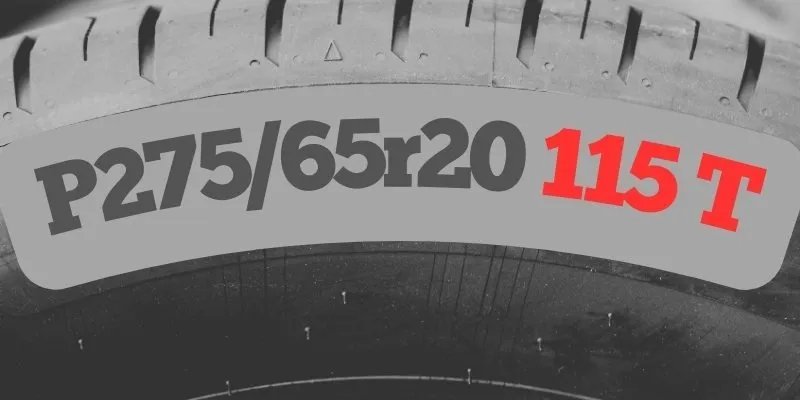What Does 115 T Mean on a Tire?

The “115 T” on a tire is a load index and speed rating. The number 115 indicates the maximum weight the tire can support, while the letter T represents the maximum speed the tire can safely handle. This information is crucial for ensuring your tires are suitable for your vehicle and driving needs.
Decoding 115 T
Have you ever looked at your car’s tires and wondered what all those numbers and letters mean? It’s like a secret code, but don’t worry – we’re here to crack it! Let’s focus on one part of this code: the “115 T” you might see on your tire’s sidewall.
Breaking Down the “115”
The number 115 is what we call the load index. Think of it as your tire’s strength rating. It tells you how much weight your tire can safely carry. But here’s the thing: 115 doesn’t mean 115 pounds. That would be too easy, right?
Instead, tire makers use a special chart. On this chart, 115 actually means the tire can hold up to 2,679 pounds. That’s about the weight of a small car! But remember, this is for one tire. Your car has four tires, so you multiply that by four to get the total weight they can handle.
What’s the “T” All About?
Now, let’s talk about that “T”. This letter is the speed rating. It tells you the top speed your tire can safely handle. Each letter stands for a different speed:
- S = up to 112 mph
- T = up to 118 mph
- H = up to 130 mph
- V = up to 149 mph
So, a “T” rated tire can safely go up to 118 mph. But hold your horses! This doesn’t mean you should drive that fast. It’s just the tire’s limit under perfect conditions.
Why Does This Matter?
You might be thinking, “Why should I care about all this?” Well, it’s all about safety and performance. Using tires with the right load index and speed rating is crucial for:
- Safety: The right tires help your car brake, turn, and handle properly.
- Legal reasons: Your car’s manual specifies what tire ratings you need. Using the wrong ones could be illegal.
- Insurance: If you have an accident with the wrong tires, your insurance might not cover you.
Real-World Examples
Let’s put this into everyday terms:
- Family Car: A typical family sedan might use 215/60R16 95H tires. The 95H means each tire can hold 1,521 pounds and go up to 130 mph.
- Sports Car: A sporty coupe could have 225/45R17 91W tires. These can each hold 1,356 pounds but are safe up to 168 mph.
- SUV: A large SUV might need 265/70R17 115T tires – exactly what we’re talking about! Each tire supports 2,679 pounds and is good up to 118 mph.
How to Check Your Tires
Next time you’re near your car, take a look at your tires. Find the long number on the sidewall. It’ll look something like “P215/65R15 89H”. The last part (89H in this example) is what we’re talking about.
If you’re not sure what ratings you need, check your car’s manual or the sticker inside the driver’s door frame. It’ll tell you the right size and ratings for your vehicle.
Picking the Right Tires
When it’s time for new tires, don’t just go for the cheapest option. Make sure the load index and speed rating match or exceed what your car needs. A tire shop can help you find the right fit.
Remember, tires with higher ratings than you need are okay, but never go lower. It’s like buying shoes – a size too big might be okay, but too small can cause problems!
Conclusion
Understanding what “115 T” means on a tire might seem like a small thing, but it’s a big deal for your safety and your car’s performance.
The load index (115) tells you how much weight the tire can handle, while the speed rating (T) indicates its maximum safe speed.
Next time you look at your tires, you’ll know exactly what those numbers and letters mean. It’s not just random code – it’s important information that keeps you safe on the road.
So, take a moment to check your tires and make sure they’re the right fit for your car and your driving needs. Safe travels!

Meet Caitlin McCormack, a Tire Size Expert and Blogger Passionate About Everything Related to Tires. With Years of Experience in the Tire Industry, Caitlin Has Become an Expert in Tire Sizes and Their Impact on Vehicle Performance.
